Redwood is a common name for Sequoioideae, a subfamily of coniferous trees.

The University of Wales is a confederal university based in Cardiff, Wales. Founded by royal charter in 1893 as a federal university with three constituent colleges – Aberystwyth, Bangor and Cardiff – the university was the first university established in Wales, one of the four countries in the United Kingdom. The university was, prior to the break up of the federation, the second largest university in the UK.

Cardiff University is a public research university in Cardiff, Wales. It was established in 1883 as the University College of South Wales and Monmouthshire and became a founding college of the University of Wales in 1893. It was renamed University College, Cardiff in 1972 and merged with the University of Wales Institute of Science and Technology in 1988 to become University of Wales College, Cardiff and then University of Wales, Cardiff in 1996. In 1997 it received degree-awarding powers, but held them in abeyance. It adopted the operating name of Cardiff University in 1999; this became its legal name in 2005, when it became an independent university awarding its own degrees.

Theophilus Eaton was a wealthy New England Puritan merchant, diplomat and financier, who took part in organizing and financing the Great Puritan Migration to America. He was a founder of Massachusetts Bay Colony, and a founder and eventual governor of New Haven Colony. He also cofounded Boston, Massachusetts, Greenwich, Connecticut and Eaton's Neck in New York.

Llantwit Major is a town and community in Wales on the Bristol Channel coast. It is one of four towns in the Vale of Glamorgan, with the third largest population after Barry and Penarth, and ahead of Cowbridge. It is 4+1⁄2 miles (7.2 km) from Cowbridge, 9 miles (14 km) from Bridgend, 10 miles (16 km) from Barry, and 15 miles (24 km) from Cardiff. It had a population of 9,530 in 2021.

The Cardiff University School of Medicine is the medical school of Cardiff University and is located in Cardiff, Wales, UK. Founded in 1893 as part of the University College of South Wales and Monmouthshire, it is the oldest of the three medical schools in Wales.

Cowbridge Grammar School was one of the best-known schools in Wales until its closure in 1974. It was replaced by Cowbridge Comprehensive School.
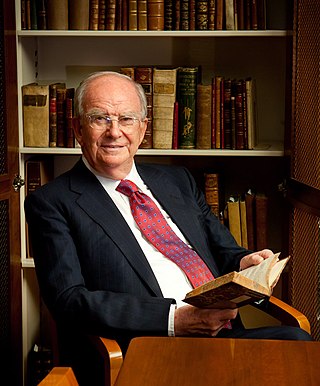
Sir John Meurig Thomas, also known as JMT, was a Welsh scientist, educator, university administrator, and historian of science primarily known for his work on heterogeneous catalysis, solid-state chemistry, and surface and materials science.
The Society of Chemical Industry (SCI) is a learned society set up in 1881 "to further the application of chemistry and related sciences for the public benefit".

Boverton is a village located to the east of Llantwit Major in the Vale of Glamorgan in South Wales.
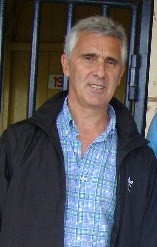
William Gareth Davies is a former Wales and British and Irish Lions international rugby union player and former chairman of the Welsh Rugby Union.

John Viriamu Jones, FRS, was a Welsh scientist, who worked on measuring the ohm, and an educationalist who was instrumental in establishing the University of Sheffield and Cardiff University.

The University of Wales Institute of Science and Technology was a public university college based in the centre of the city of Cardiff, Wales. In 1988, it merged with the University College Cardiff, which later became Cardiff University.
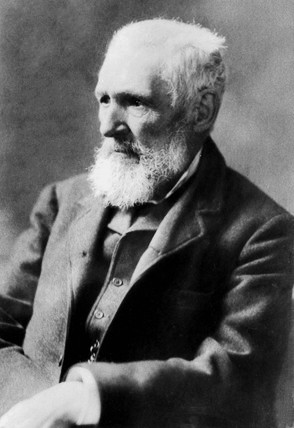
Theophilus Redwood was a Welsh pharmacist who was one of the founding members of the Royal Pharmaceutical Society of Great Britain. He was born in Boverton, Llantwit Major.
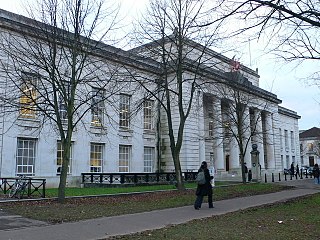
The Bute Building is a Cardiff University building in Cathays Park, Cardiff, Wales. It houses the Welsh School of Architecture. It is a Grade II listed building.

Percy Thomas Partnership was the trading name of the award-winning British architectural practice established some time between 1965 and 1973 as the successor to a series of earlier partnerships originally set up by Percy Thomas (1883–1969) in Cardiff, Wales in 1911/12. Percy Thomas and the Percy Thomas Partnership put their name to a number of landmark buildings in the United Kingdom including the Wales Millennium Centre, Cardiff. It opened offices overseas and completed a number of prestigious buildings in Hong Kong.
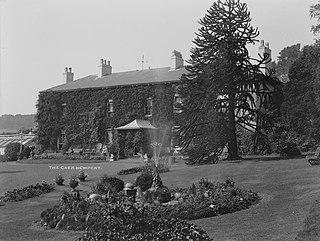
The Gaer House is an estate house located in the community of Gaer, Newport, South Wales. It is situated about 2 miles (3.2 km) from the Newport to Cardiff road, near a Roman fort, which gave the name to the estate. The Gaer Hillfort, a large circular site, is a huge fort situated in a defensive position overlooking the Ebbw River. It contains many enclosures, a large bank and a ditch. In the 17th century, the hillfort was included in the ornamental landscaping plan of nearby Tredegar House.
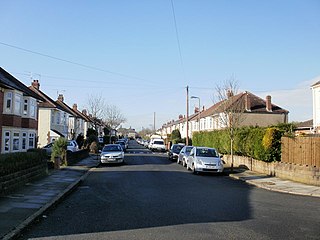
Thomas Alwyn Lloyd OBE, known as T. Alwyn Lloyd, was a Welsh architect and town planner. He was one of the founders of the Town Planning Institute in 1914 and its President in 1933. He was also a founding member of the Council for the Protection of Rural Wales in 1928 and served as its chairman from 1947 to 1959. Meic Stephens described Lloyd's work as follows:
Lloyd's small-scale buildings reflected his deep feeling for place, in both historical and environmental terms, as in the Garden Villages for which he was responsible in various parts of Wales.

Sir Aubrey Fiennes Trotman-Dickenson was a British chemist and academic administrator.

Sir Thomas Boverton Redwood FRSE FIC FCS FGS FRSA MIME (1846–1919) was a 19th-century British chemical engineer remembered as a pioneer of the petroleum industry. An early car-collector and enthusiast, he was also one of the first to investigate alcohol as a fuel.



















